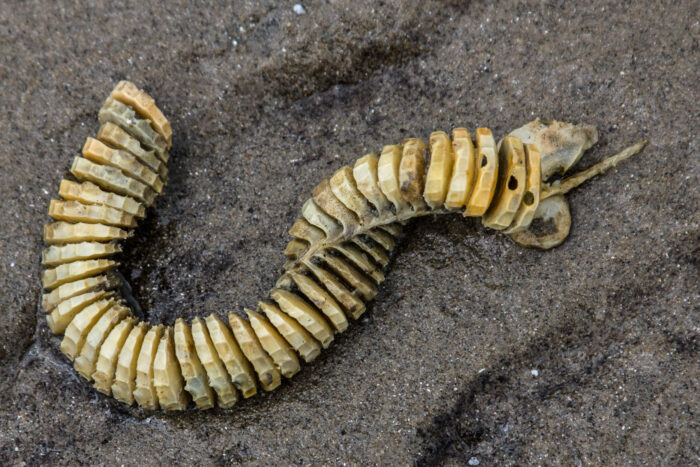Knobbed whelk
Busycon carica
Knobbed whelks are marine gastropods that live in tidal estuaries along the Atlantic coast. Their spiral shells can range in color from grayish white to tan.
This section shows one large critter image at a time. Use the thumbnails that follow to select a specific image to display here.

This gallery contains a grid of small thumbnails. Selecting a thumbnail will change the main image in the preceding section.
Appearance
The whorled or spiral shell of the knobbed whelk has low spines on its shoulder, and the shell opening is located on the right side. The shell color varies: the outer shell ranges from grayish white to tan, while the inner shell ranges from pale yellow to orange
A hard plate called the operculum acts like a trap door when the snail retracts into its shell. The body of the snail is divided into head, abdomen and foot. Two pairs of tentacles are located on its head: one senses light, while the other is used for touch and smell. Adult knobbed whelks measure five to nine inches in length. Females grow larger than males.
Feeding
This animal feeds on clams, oysters, mussels and other bivalves. To feed, the snail uses its foot to hold prey while the lip of its shell chips and pries at the bivalve. Once a big enough hole has opened, the snail inserts its foot and begins to feed.
Predators
Predators include crabs, sea stars and urchins.
Reproduction and life cycle
The knobbed whelk grows by producing turns and whorls in its shell around a central axis. Females lay a string of eggs in deep water twice a year, usually from September to October and April to May.
Strings of eggs are anchored on one end to the sand and consist of up to 40 capsules, with each capsule containing up to 100 fertilized eggs. These eggs develop slowly and hatch in three to 13 months. Adults are thought to start out as males and change into females as they age, which could explain why females are almost always larger than males.
Did you know?
- Knobbed whelks have been in existence for more than 30 million years.
- They are the state shell of both New Jersey and Georgia.
- As an economic resource, knobbed whelks are fished for their meat and sold in the tourist trade as ornamentals.
Sources and additional information
- Knobbed Whelk – South Carolina Department of Natural Resources
- Knobbed Whelk - Barnegat Bay Partnership
- Knobbed Whelk – Enchanted Learning
